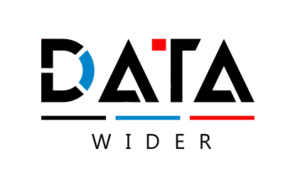Innovation is reshaping our reality. The multiplication of cell phones, the blast of internet based life, and the fast development of distributed computing have offered ascend to an ideal tempest that is flooding the world with information.
The test for endeavors is that, as indicated by Gartner gauges, 80 percent of this “huge information” is unstructured, and it’s developing at double the pace of organized information.
Considering this exponential development of confused information, there has never been a more prominent requirement for information arrangements that go past what customary social databases can offer.
That is the place the open source large information investigation stage Apache Hadoop, and the NoSQL application Apache Cassandra enter the image.
What follows is a concise correlation of the contrasts between Hadoop versus Cassandra, alongside how these two arrangements can supplement each other to convey amazing large information bits of knowledge. Look at one case of a Hadoop use case, and when the stage can be matched with Cassandra for ideal execution.
What is Hadoop?
A result of the Apache Software Foundation Project, Hadoop is a major information preparing stage that uses open source programming, a disseminated document framework (HDFS) and a programming structure known as MapReduce to store, oversee and break down greatly enormous arrangements of unstructured information in equal across dispersed bunches of product workers at exceptionally high scale.
With Hadoop, both HDFS and the MapReduce structure run on a similar arrangement of hubs. This permits the Hadoop structure to adequately plan figure assignments on hubs where information is as of now being put away.
Thus, Hadoop is most appropriate for running close to time and group situated examination on immense pools of “cold”, otherwise known as, recorded information—in different organizations—in a dependable and issue open minded way.
While MapReduce is a solid and dependable information handling instrument, it’s principle downside is an absence of speed.
That will be normal, as most guide/decrease employments are long running clump occupations which can take minutes or hours or considerably longer to finish. Unmistakably, the developing requests and desires of enormous information call for quicker an ideal opportunity to understanding, which MapReduce’s group remaining tasks at hand aren’t intended to convey.
What is Cassandra?
On a very basic level, Cassandra is a disseminated NoSQL database intended to oversee huge measures of organized information over a variety of ware workers. Cassandra flaunts an interesting engineering that conveys high dissemination, direct scale execution, and is equipped for dealing with a lot of information while giving persistent accessibility and uptime to a large number of simultaneous clients.
Not at all like Hadoop, which is normally sent in a solitary area, Cassandra’s high dispersion takes into account arrangement across nations and mainlands.
What’s more, Cassandra is consistently up, consistently on, and conveys exceptionally reliable execution in a deficiency open minded condition. This makes Cassandra perfect for preparing on the web outstanding tasks at hand of a value-based nature, where Cassandra is taking care of enormous quantities of communications and simultaneous traffic with every connection yielding limited quantities of information.
Rather than Hadoop, which can acknowledge and store information in any organization—organized, unstructured, semi-organized, pictures, and so forth.— Cassandra requires a specific structure. Accordingly, a ton of reasoning is required to structure a Cassandra information model versus Hadoop model before it very well may be effectively executed at scale.
How Does Cassandra Compare to HBase?
HBase is a NoSQL, dispersed database model that is remembered for the Apache Hadoop Project. It runs on head of the Hadoop Distributed File System (HDFS). HBase is intended for information lake use cases and isn’t normally utilized for web and versatile applications. Cassandra, paradoxically, offers the accessibility and execution essential for growing consistently on applications.
Consolidating Cassandra and Hadoop
The present associations have two information needs. The requirement for a database committed to online tasks and the investigation of “hot” information produced by Web, portable and IOT applications.
What’s more, the requirement for a clump arranged large information stage that bolsters the handling of tremendous measures of “cold” unstructured recorded information. By firmly incorporating Cassandra and Hadoop to cooperate, the two needs can be served.
While Cassandra works very well as an exceptionally deficiency open minded backend for online frameworks, Cassandra isn’t as investigation benevolent as Hadoop.
Sending Hadoop on head of Cassandra makes the capacity to investigate information in Cassandra without having to initially move that information into Hadoop. Getting information off Cassandra into Hadoop and HDFS is a confused and tedious procedure.
In this manner Hadoop on Cassandra gives associations a helpful method to get explicit operational investigation and announcing from moderately a lot of information living in Cassandra progressively style. Equipped with quicker and more profound enormous information experiences, associations that influence both Hadoop and Cassandra can all the more likely address the issues of their clients and addition a more grounded edge over their rivals.











